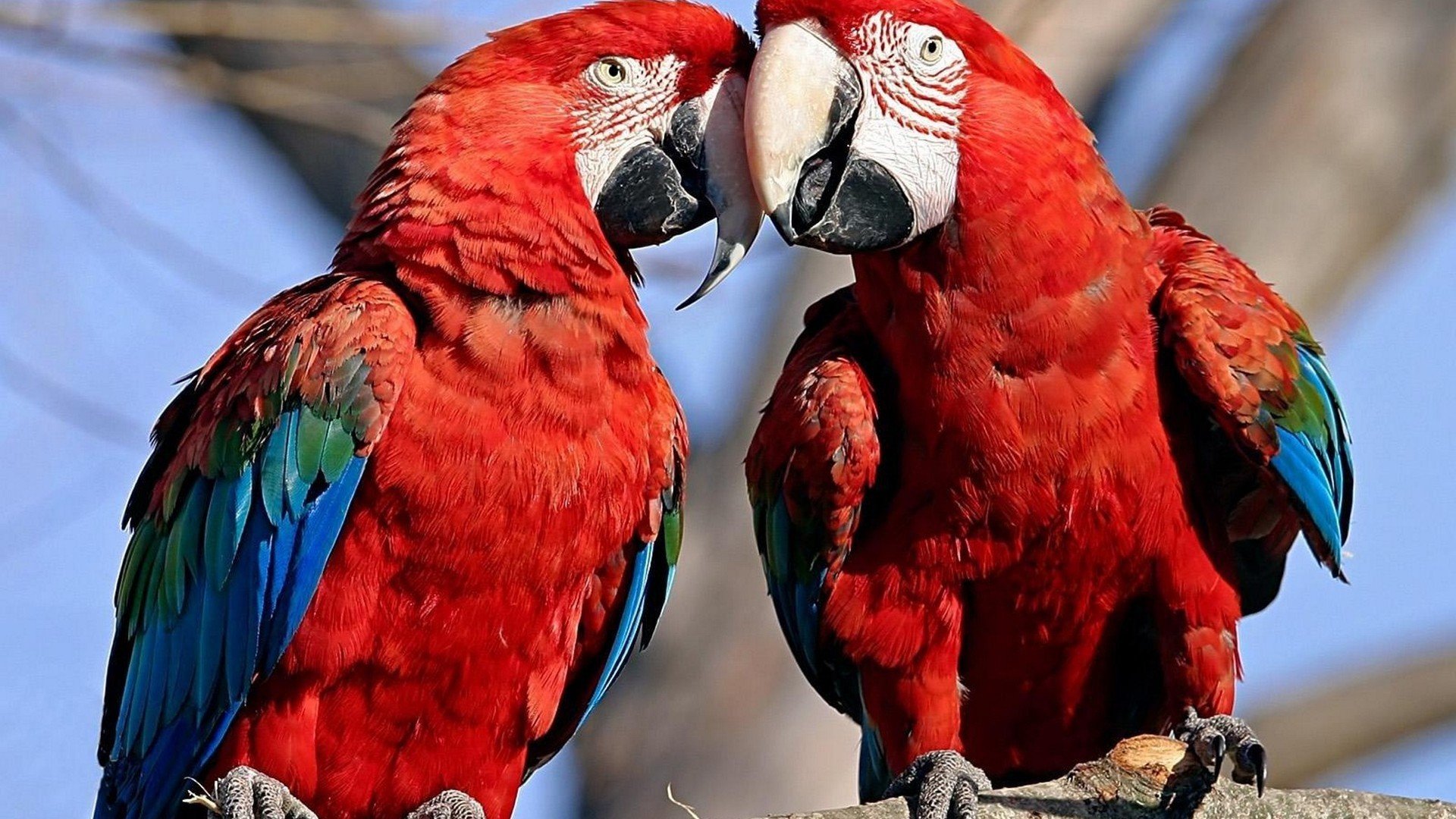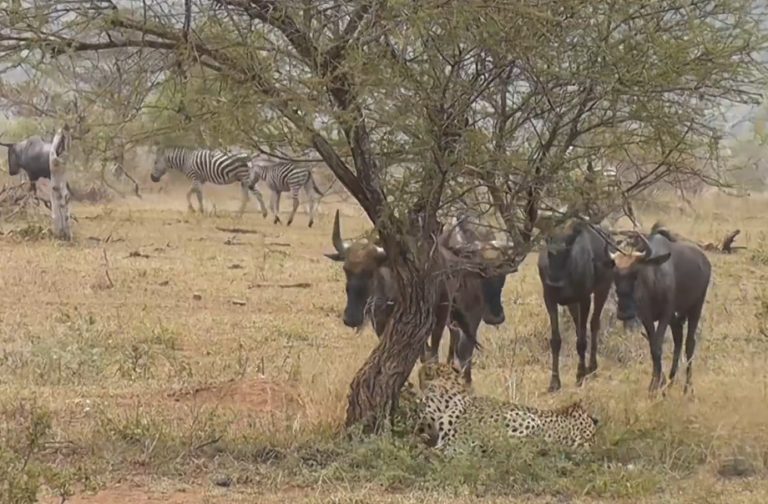Summer tanagers, scientifically known as Piranga rubra, are members of the Cardinalidae family, which also includes cardinals, grosbeaks, and buntings. These medium-sized songbirds are a colorful and welcome sight as they return to the United States each spring and summer to breed. They prefer open woodlands and forests but can also be found in parks and gardens with mature trees. In this article we will look at interesting facts about summer tanagers.
10 FACTS ABOUT SUMMER TANAGERS
1. THEY ARE THE ONLY COMPLETELY RED BIRD IN NORTH AMERICA
While there are certainly many red colored birds in North America such as the cardinal, vermillion flycatcher and scarlet tanager, none of those are as 100% red as the summer tanager. The male summer tanager in his breeding plumage is bright red all over, no black patches or streaks like some other birds.
2. MALES AND FEMALES HAVE DIFFERENT COLORING
Male summer tanagers have bright red feathers with slightly darker red feathers along their tails and wings. Female summer tanagers are yellow, with brighter yellow on the head and chest and a slightly darker greenish-yellow on the back and wings.

3. MALES ARE A MIX OF COLORS AS THEY TRANSITION INTO ADULTHOOD
Young male summer tanagers are a greenish-yellow like females. As they get older, they will begin to molt and transition into the bright red feathers of their adulthood. But they don’t just go to sleep yellow and wake up red, there is a transitional molting period where they will slowly replace their yellow feathers with red ones. During this process they can look quite pretty in their own right, a mix of patchwork yellow, pink and red.
4. SUMMER TANAGERS ARE MIGRATORY BIRDS
Summer Tanagers are migratory birds that spend winters in Mexico, Central and South America. In the spring, these birds head north, covering up to thousands of miles to reach the United States. They begin to arrive along the southern border of the U.S. in March. In the spring and summer they are most common in the southeastern states and Texas, but also spread into the southwest. They don’t reach New England or the Great Lakes in large numbers, but some may stray that far north. They head back south in the fall and are mostly back on their wintering grounds by October – November.

5. THEY AVOID OVERLAPPING BREEDING HABITATS WITH OTHER TANAGERS
There are other tanager species that also breed in the U.S during the summer, and their ranges can overlap with the summer tanager. In the east there is the scarlet tanager, and the summer tanager will choose shorter and more open woodlands, leaving thicker forest to their scarlet cousins. In the west, summer tanagers will choose lowland areas along streams to breed, and leave higher elevation coniferous forests for the western tanagers and hepatic tanagers.
6. SUMMER TANAGERS EAT BEES AND WASPS
While other birds may avoid them, summer tanagers are specialists at eating bees and wasps, both on their summer and winter grounds. They will spot them from a perch, then head out and snatch them in mid-air, then carry them back to a perch. There, they will hold them in their beak and beak them on the branch to remove their stinger before eating them. They have also been known to break open wasp nests to devour the larvae inside. Brave birds!

7. THEY HAVE MANY WAYS OF GETTING FOOD
As we just mentioned, they are able to catch insects in mid-air. But they can also search through shrubs and trees, pulling insects off bark and leaves. In addition to bees and wasps, summer tanagers are known to eat grasshoppers, flies, cicadas, beetles, ants, spiders and moths.
Fruit also makes up part of their diet. Larger fruit they can land on and eat, like bananas and citrus fruits. However for some smaller berries they may actually hover for short periods of time while picking the berries off the plant.
8. YOU MAY BE ABLE TO ATTRACT THEM TO YOUR YARD
Certainly, living in a more forested area within their range gives you a better chance of spotting them. However many birds that may not typically visit a backyard can be much more willing during migration.
In the spring, putting out oranges and fruits may lure summer tanagers to your yard as they are just arriving back from their long trip and are looking for energy and food sources. In the fall they need to fatten up before their trip, and having native berry producing plants in your yard might make it a good stopping point.
Of course, a yard that encourages insects and provides water (bird bath) is always helpful for attracting many bird species.

9. MALE SUMMER TANAGERS SING WHISTLING SONGS
Male summer tanagers song is a series of whistles and pauses that many people compare with the song of an American robin. Aside from their song, they have a distinctive “pit-ti-tuck” call that can be a good identifier if you hear it.
Summer tanagers typically sing from high perches in the forest canopy during the breeding season and it serves as a way for males to establish territories and attract mates. The song is also thought to play a role in male-male competition, as neighboring males may respond to each other’s songs and engage in territorial disputes.
10. SUMMER TANAGERS ARE MONOGAMOUS DURING THE BREEDING SEASON
Summer tanagers form pairs during the mating season, and then the male stays with that female throughout the entire season. They are monogamous, so they do not mate with more than one female during the mating season.

9. FEMALE SUMMER TANAGERS BUILD CUP-SHAPED NESTS
Female summer tanagers are solely responsible for building the nest, though the males do tend to tag along during this process. The female will pick a spot in a tree on a horizontal branch and build a nest that is shaped like a cup. When possible, they seem to like to build in trees that hang over open areas, such as above a road or creek. She will use pieces of grass, bark, moss, leaves, and even spiderwebs to build her nest. The nest is usually between 10 and 35 feet above the ground.
10. BOTH PARENTS TEND TO THE YOUNG
After the female builds the nest, she sits on her eggs for about 11 or 12 days. Summer tanager eggs are a pale greenish-blue with brown markings. Males may bring food to the female while she is incubating, but not always. However once the eggs begin to hatch, the male is back in action and shares in feeding duty for several weeks. Cowbirds do target tanager nests to lay their eggs in, and summer tanagers try hard to chase away any cowbirds they see in their nesting area.








